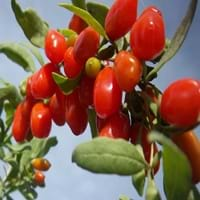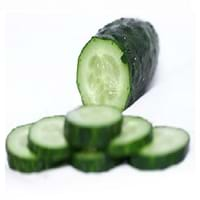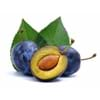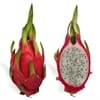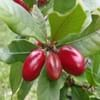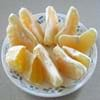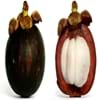Health Benefits
Anti-oxidant properties, Eye care, Helps in cartilage regeneration, Regulates Blood Sugar, Treatment of osteoarthritis
Arthritis treatment, Cancer prevention, Eczema treatment, Increases metabolic rate, Kidney stone treatment, Prevents constipation, Removes toxic metals, Treatment of alzheimer's disease
General Benefits
Boosts immune system, Digestive aid
Anti oxidant properties, Anti-inflammatory properties, Controls blood pressure, Digestive aid, Strengthens bones, Treatment of sore eyes
Skin Benefits
Anti-aging benefits, Reduces wrinkles, Treatment of skin diseases
Heals sunburn, Hydrates skin, Skin rejuvenation, Skin revitalization, Treatment of dark spots, Treatment of skin diseases
Hair Benefits
Protects hair, Regulates hair growth
Promotes longer and healthier hair, Protects hair, Regulates hair growth, Shiny hair
Allergy Symptoms
Anaphylaxis, Itching, Sneezing, Wheezing
Breathing difficulty, Decrease in blood pressure, Diarrhea, Itching, Red rash, Runny nose, Sneezing, Vomiting, Watery eyes
Side Effects
May interact with some drugs
Stressed heart, Irritation, Swelling, Swelling around mouth, Throat swelling, Tongue swelling, Strained blood vessels
Lactating Women
Yes
Not Available
Best Time to Eat
Any time except an hour after meal, Don't consume at night and before bed
Along with meal, As a snack in the late afternoon, Eat the fresh ones, avoid mixing with any other foods, don't eat after meal., Strictly avoid empty stomach
Vitamin B5 (Pantothenic Acid)
Vitamin C (Ascorbic Acid)
Vitamin K (Phyllochinone)
Calories in Fresh Fruit with Peel
Calories in Fresh Fruit without Peel
Not Available
Calories in Frozen Form
Not Available
Calories in Dried Form
Not Available
Calories in Canned Form
Not Available
Not Available
Calories in Juice
Not Available
Calories in Jam
Not Available
Calories in Pie
Not Available
Type
Berry
Fruit vegetable, Melon
Season
Autumn
Spring, Summer
Varieties
No Types
Armenian, English, Garden, Kirby, Lemon and Persian
Color
Scarlet red
Dark green, Green
Inside Color
Orange
White
Taste
Slightly bitter, Tart
Juicy, Watery
Soil Type
Well-drained
Loam
Climatic Conditions
Cold, Hot
Warm
Facts about
- Study says a man named Li Qing Yuen used to eat goji berries daily and lived for 252 years.
- They are also known as wolfberries in India & China.
- This fruit is used for spiritual purposes at many places.
- Outer waxy coating of cucumber can erase the pen writing.
- Pressing cucumber on roof of mouth for 30 sec will eliminate bad breath.
- It is made up of 96% water.
- English cucumber can grow longer than 2 feet.
Other Countries
Canada, France, India, United States of America
Egypt, Indonesia, Iran, Japan, Russia, Spain, Turkey, Ukraine, United States of America
Top Importer
United States of America
France
Botanical Name
Lycium barbarum
Cucumis sativus
Synonym
Wolfberry
Not Available
Subkingdom
Tracheobionta
Tracheobionta
Division
Unknown
Magnoliophyta
Class
Unknown
Magnoliopsida
Subclass
Asteridae
Dillenhidae
Order
Solanales
Cucurbitales
Family
Solanaceae
Cucurbitaceae
Species
L. barbarum
C. sativus
Generic Group
Not Available
Not Available
Difference Between Gojiberry and Cucumber
We might think that Gojiberry and Cucumber are similar with respect to nutritional value and health benefits. But the nutrient content of both fruits is different. Gojiberry and Cucumber Facts such as their taste, shape, color, and size are also distinct. The difference between Gojiberry and Cucumber is explained here.
The amount of calories in 100 gm of fresh Gojiberry and Cucumber with peel is 32.00 kcal and 15.00 kcal and the amount of calories without peel is Not Available and 12.00 kcal respectively. Thus, Gojiberry and Cucumber belong to Low Calorie Fruits and Low Calorie Fruits category.These fruits might or might not differ with respect to their scientific classification. The order of Gojiberry and Cucumber is Solanales and Cucurbitales respectively. Gojiberry belongs to Solanaceae family and Cucumber belongs to Cucurbitaceae family. Gojiberry belongs to Lycium genus of L. barbarum species and Cucumber belongs to Cucumis genus of C. sativus species. Beings plants, both fruits belong to Plantae Kingdom.
